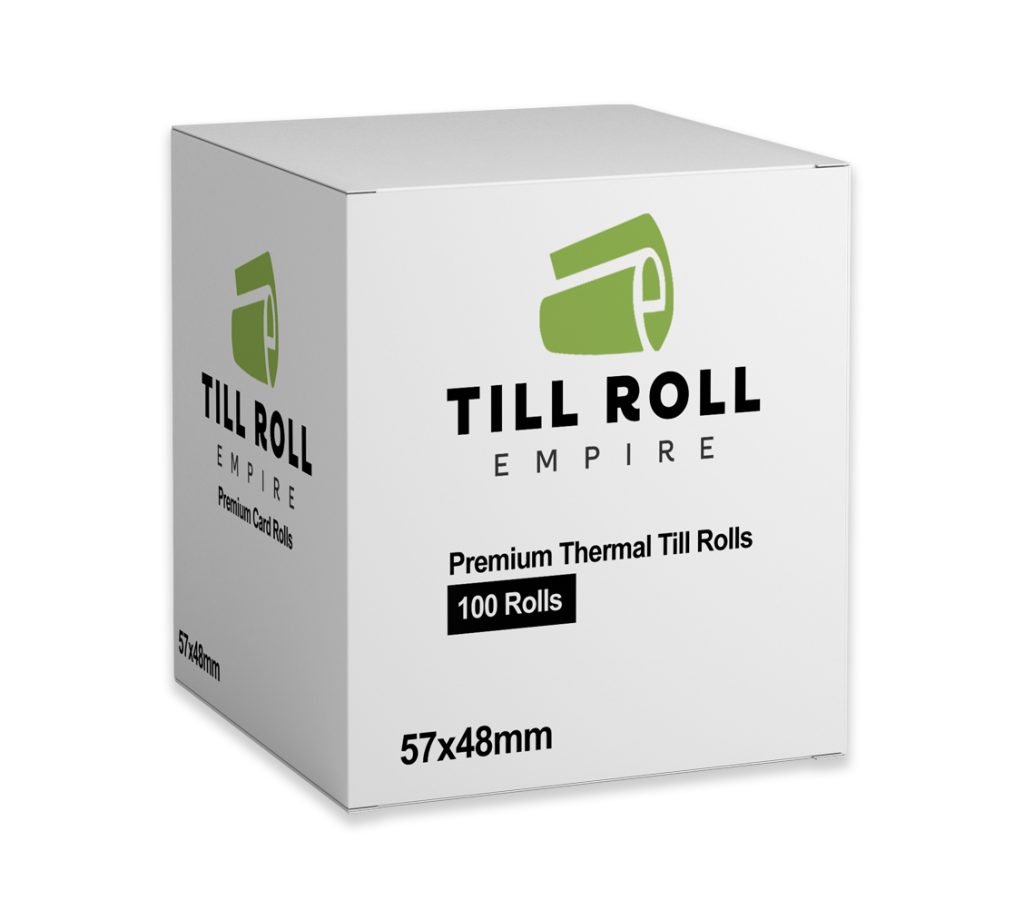Misconception 1: Thermal printers require ink or toner
Unlike inkjet or laser printers, thermal till rolls use a heat-sensitive coating to produce images. A special chemical layer on the paper darkens under heat, so the printer only needs to apply heat (no ink or toner) to print. In other words, the only consumable in a thermal printer is the paper itself. This is why thermal printing is fast and low-maintenance – there are no ink cartridges to replace.
Misconception 2: Thermal prints fade too quickly
It’s true that extreme exposure to light, heat, or moisture can cause thermal prints to fade over time, but under normal conditions high-quality thermal paper is quite durable. Most thermal receipts stay legible for years if kept out of direct sunlight.
Modern thermal papers often include protective topcoats (phenol-free or BPA-free varieties) that resist fading and environmental wear. So, while very old or poorly stored prints can fade, properly made and stored thermal receipts will last well beyond the point of typical use.
Misconception 3: Thicker thermal paper rolls are more durable
In fact, thicker rolls simply contain fewer meters of paper, not better prints. A common belief is that “thick = long-lasting,” but thick thermal paper gives you fewer receipts per roll.
Thicker paper will clog a printer less easily, but it also wears out sooner since the roll is shorter. For most businesses, a thinner (higher-length) roll is more cost-effective. The durability of prints depends on the paper’s coating and how it’s stored, not on raw thickness.
Misconception 4: Thermal paper is bad for health and the environment
Older thermal papers did use BPA (bisphenol A), which raised health concerns. Today many till rolls are explicitly BPA-free. New phenol-free and recycled-material options exist that print just as clearly without the old chemicals.
Thermal rolls actually reduce waste in some ways (no empty ink cartridges), and by choosing recyclable or eco-friendly brands you can cut down impact. In short, well-made BPA-free thermal paper is safe for daily use and modern manufacturers even market recycled/coated papers to meet environmental standards.
Misconception 5: Thermal receipts can be recycled just like ordinary paper
In reality, most standard thermal receipt rolls cannot go into the normal paper recycling bin. The special heat-sensitive coating (and any residual chemicals) makes them “contaminated” for paper mills. Many recycling programs ask that thermal receipts be thrown in the trash or collected separately.
Only specialized recycling streams can handle thermal paper. So despite being paper-based, thermal receipts generally do not simply mix with your office paper recycling. (For an eco-friendly approach, look for thermal paper marked recyclable or contact local waste services about proper disposal.)
Misconception 6: Thermal till rolls have an expiration date or go bad quickly.
Thermal paper doesn’t come stamped with an expiration date – it lasts as long as you store it properly. Like any specialty paper, its longevity depends on conditions. If rolls are kept in a cool, dry place away from sunlight, they can stay in perfect condition for years.
Improper storage (high heat, humidity, solvents, or sunlight) can prematurely darken or erase the coating, but this is a storage issue, not an automatic “expiry.” In short, a thermal roll won’t “go bad” on its own – treat it like photo paper and it will remain usable indefinitely.
Misconception 7: All thermal till rolls are the same standard size
Thermal rolls come in many widths and diameters. For example, 57×48 mm (2¼″ × 48 mm) is a very common size for credit-card terminals and compact receipt printers. There are also larger rolls (e.g. 80 mm wide for grocery and retail registers) and smaller rolls for handheld machines.
Each device has specific requirements. The 57×48 thermal till rolls are popular because they fit into portable and countertop POS printers (they save space and often cost less), yet still print clear, detailed receipts. Always check your printer’s specs – matching the width (like 57 mm) and core size ensures the roll feeds correctly and prints without jams.
Misconception 8: Thermal paper is more expensive overall
While individual rolls of high-quality thermal paper may cost more upfront than cheap bond paper, they save money in the long run. Thermal printing requires no ink, ribbons, or toner, so those supply costs disappear. Printers also tend to be simpler (fewer moving parts), reducing maintenance.
In fact, studies show that any higher roll cost is more than offset by the savings on consumables. Because you don’t buy ink/toner, change cartridges, or refill color inks, the total cost per printed receipt is often lower with thermal systems.
Misconception 9: Thermal rolls work in any printer (or vice versa)
Thermal till rolls are designed only for thermal printers. They won’t produce an image in an inkjet, laser, or dot-matrix printer, and trying to use them there can damage the printer. Likewise, you can’t run ordinary copier paper through a thermal receipt printer – it has no heat-reactive coating.
Always use genuine thermal paper in a thermal printer. Modern POS devices and credit-card printers specify the roll size and type (such as 57×48 mm thermal paper). Following the printer’s guidelines ensures clean prints and avoids jams. (In short: thermal paper needs thermal printing – there’s no mixing with other printing methods).
Misconception 10: Thermal till rolls are only for simple receipts and nothing else
In fact, thermal till rolls are extremely versatile and used across industries. Besides retail checkouts, thermal printers appear in restaurants, hotels, ATMs, ticketing machines, label printers, medical devices, parking meters, and more. Their fast printing speed and high resolution make them ideal for barcodes, logos, and long receipts alike.
For example, in retail and hospitality they print quick itemized receipts and gift receipts. In healthcare and logistics, they print labels and wristbands with clear patient info or tracking codes. The convenience (no ink to dry out, instant prints) means thermal paper has become the default for any situation requiring a quick, reliable printout.

